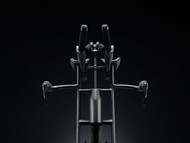CADEX Tri Frameset
12th Jan 2024
The CADEX Tri was used to great success in the Sub 7 event, with Kristian Blummenfelt and his team of pacers doing a stellar job through the bike leg.
So what are the key features packed into the CADEX Tri that make it a viable Triathlon race machine?
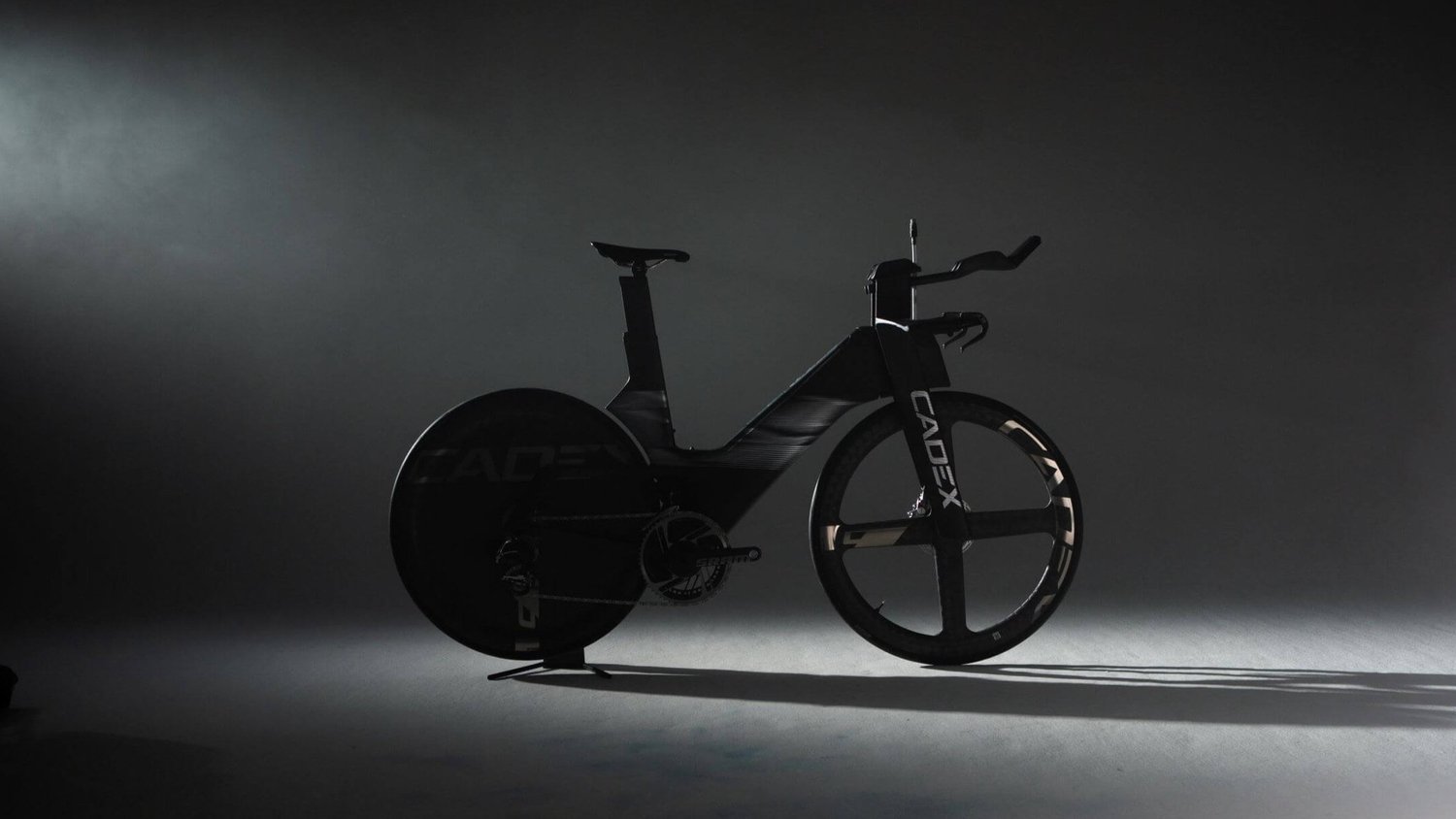
Image by @GiantBicycles
CADEX Tri Frameset
When presented with the idea of designing the cockpit for the CADEX bike I was struck by a moment of nostalgia, with the silhouette of the concept bike sharing a striking resemblance to Giant MCR of the late 90’s.
As a teenager completely obsessed with mountain bikes and the technical innovations, I remember seeing an MCR in the flesh for the first time and being taken back by the frame design, the carbon construction and the thick composite spoked wheels. Given it was a road bike, this tech meant nothing to my own cycling endeavours at the time, but from a technical standpoint, it was downright cool.
Like many of the composite bikes of the 90’s, their success was limited by manufacturing techniques, weight and longevity – No matter how revolutionary the aero developments may have been, no one want’s to ride a bike that is profoundly heavy, doesn’t ride well and doesn’t last long. Some would say these bikes were before their time, others would say that such “failures” are the inevitable first step in product evolution. Fast forward 25 years and we arrive at the CADEX Tri, a bike that undoubtedly pays tribute to the Giant MCR, manufactured with modern-day materials and manufacturing techniques, applied to the demands of modern-day Triathlon.
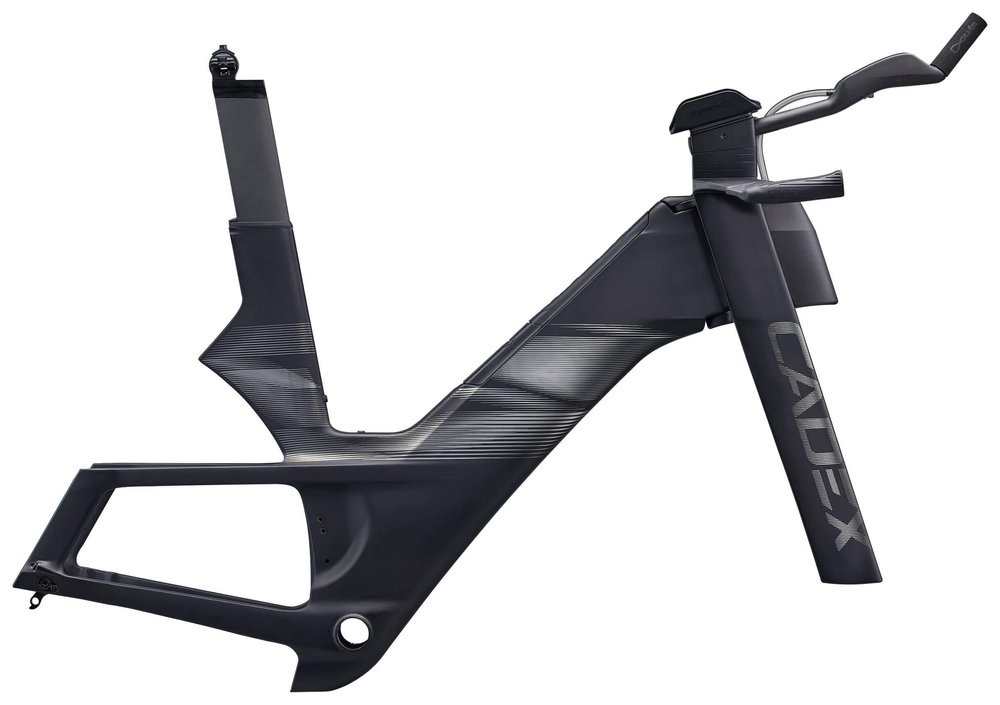
Modern-day Triathlon Demands
Getting from T1 to T2 in the shortest possible time requires maximum output (speed) for the rider’s input (power output), this efficiency coming primarily from the athlete’s position on the bike (aerodynamic efficiency). For even modest pace, around 90% of resistance to forward motion is in the form of aerodynamic drag, and about 10% is in the form of mechanical resistance. Of this, about 70% of resistance is attributed to airflow over the athlete, 30% is attributed to airflow over the bike.
This, of course, is not forgetting the physiological toll of a 180 km bike leg, in some of the harshest environments, requires a nutrition and hydration strategy to maintain performance. Nor the fact that more often than not a puncture requires tech-hands of the athlete, to salvage any chance of remaining in the race. A triathlon bike has a hefty list of requirements and the CADEX system provides a performance solution that impacts each component of this equation.
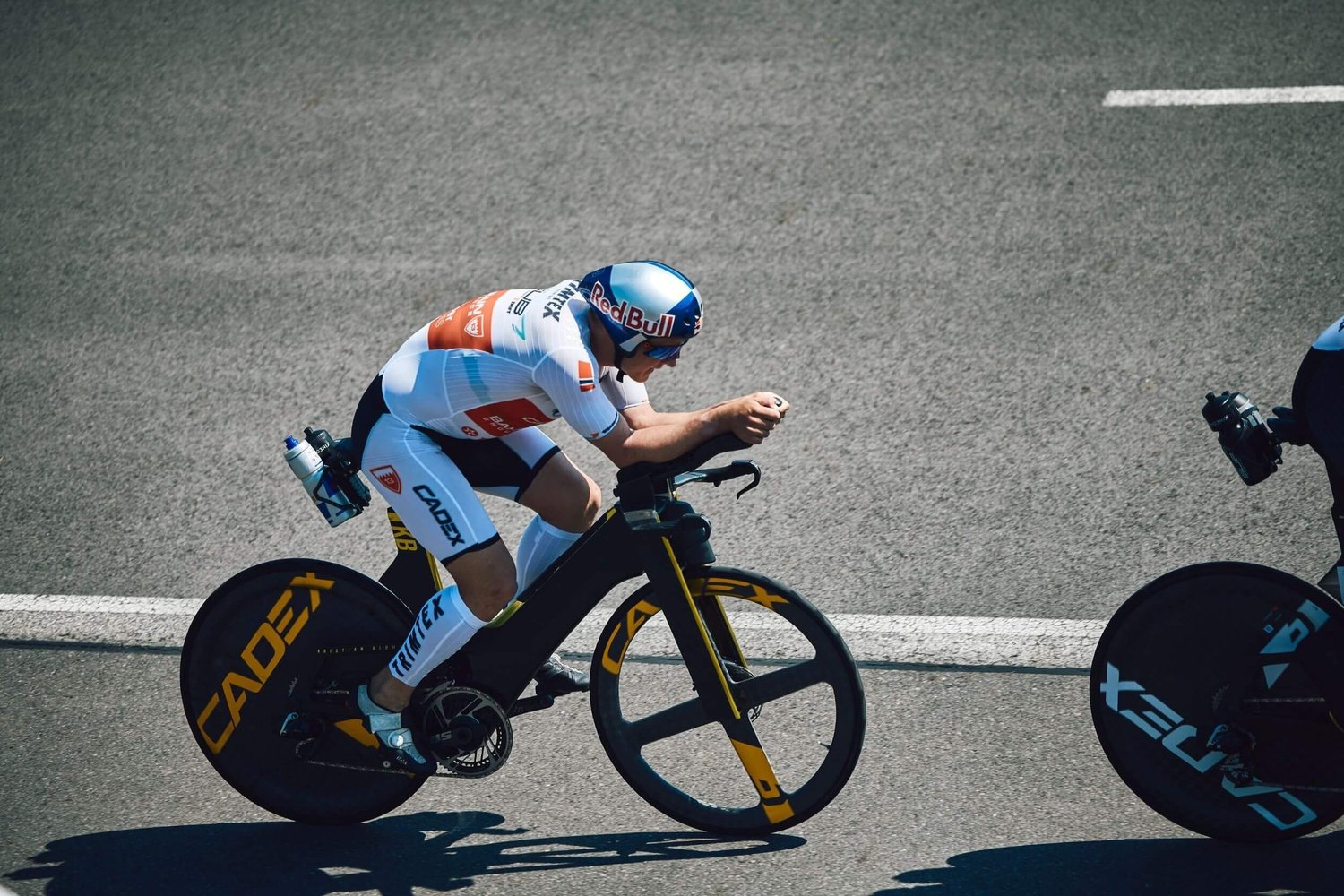
Image by: @GiantBicycles
Position Optimisation
This is absolutely critical to aero performance, with airflow over the athlete being the largest component of the drag equation. Frame geometry is the foundation, independent adjustment of each setup variable is “the cake” and the cherry on top is the ease of which adjustments can be made.
Pad stack can be adjusted in 10 mm increments, with a total of 80 mm of height adjustment. The basebar, which sits within the spacer stack, has 40 mm of adjustment within this spacer stack. Pad reach is adjustable in 15 mm increments, with a range of 90 mm. The width of the arm cups can be adjusted between 190 mm and 310 mm (outside-outside) in 15 mm increments. Angulation is adjustable between 0 and 15-degrees, in 5-degree increments.
The geometry and adjustment range has been targeted towards the needs of Triathletes, or what CADEX have termed Endurance Aero, where 180 km is the norm. From saddle position to the fit window of the cockpit, the purpose is comfort and aero performance over the full distance, maximising time an athlete spends in their best aero position.
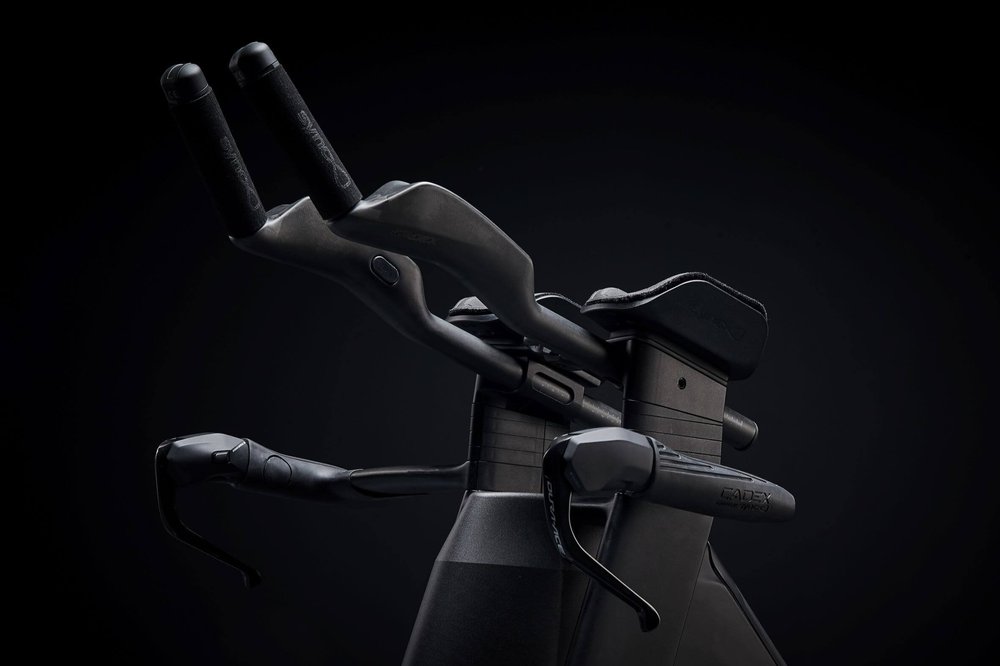
Extension Geometry
In a project that started with the winning extensions of Luke Plapp and has continued with the success of Team BikeExchange, the CADEX extensions have been modelled from an extensive catalogue of rider scans and knowledge of the position we wish to achieve. As with all Sync Ergonomics products, the primary objective is position optimisation.
The secondary objective of the CADEX extensions is to manipulate the airflow over the extensions and forearms, in a way which lowers pressure drag. With a typical aerobar setup, the extensions and forearms are two distinct bodies and interact with the oncoming flow as such. Like our EVO PRO extensions, the CADEX extensions effectively create one body from the extension and forearm, providing a smoother path for airflow. This eliminates the low-pressure region of the flow between the extension and forearm, reducing the overall pressure drag.
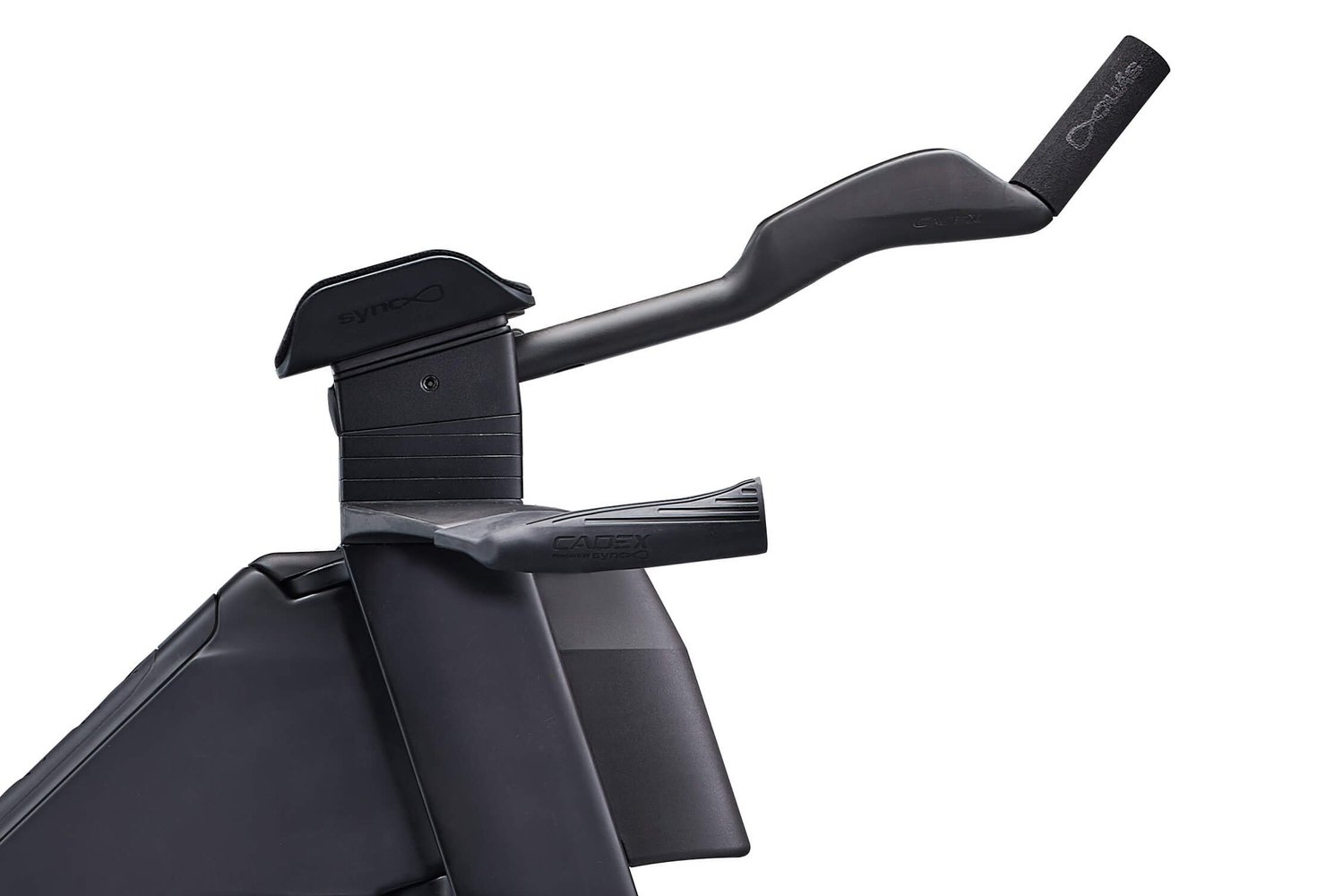
Image by: @GiantBicycles
Nutrition and Hydration
Needing to consume in the order of 60 g of CHO and 750-1000 ml of fluid per hour, requires hefty storage provisions.
Storage for CHO supplements and a water reservoir that is both refillable and easily accessible for on-the-fly consumption. What’s critical in the philosophy of Sync Ergonomics, is that that the hydration requirements should never come at a compromise to the aerodynamic performance of the athlete’s position, a story that we hear and see far too often.
CADEX have successfully addressed all these points with the bento box storage, refillable bladder that is low-slung for optimal weight distribution and an easily accessible drinking hose.

Aero Wheelsystem
This is a complex package that encompasses far more than simply the wheel and requires a system wide approach to achieving the most balanced design. Bringing this back to the basics, it’s about rolling resistance, a factor in the mechanical resistance to forward motion.
Ceramic bearings help in reducing friction, but so does the precision machining of the bores in the hub shells, an often overlooked factor in rolling resistance. The interaction between the tyre and the rim is relevant for both aero performance, but also controlling the deformation of the tyre as it is weighted while riding. The design of the rim is favourable to certain types of tyres, which of course, all have their own unique rolling qualities. Then, of course, there is the aero component, with airflow over the wheel and the interaction between the wheel and the bike.
Addressing all of these design considerations really comes from CADEX “owning” the whole package and hats off to the team for producing a great Wheelsystem.
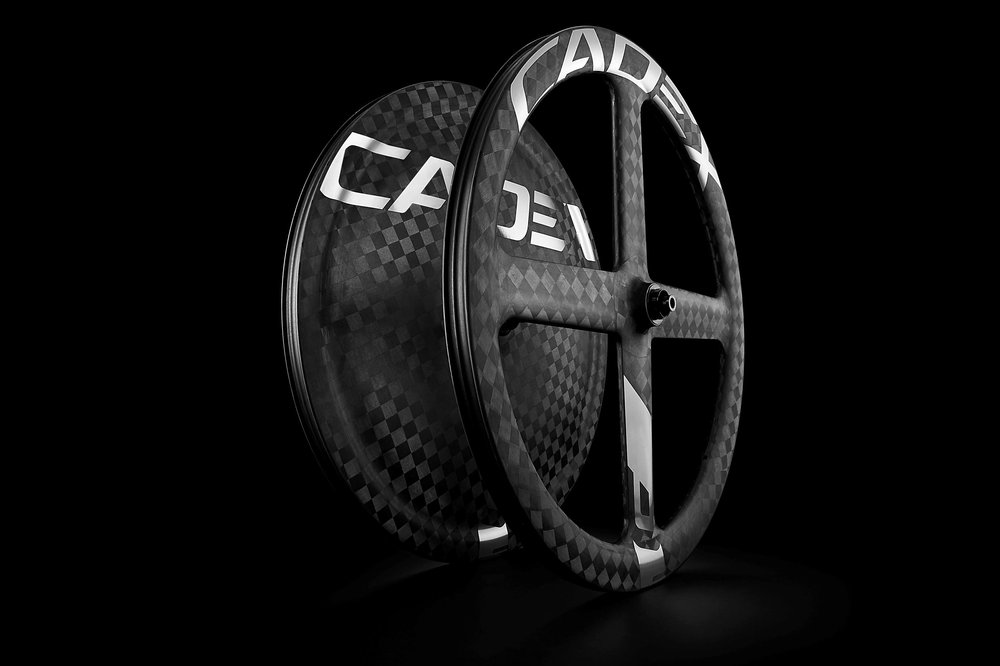
Advanced Ergonomics
We are proud to be involved in a project that genuinely set out to achieve the best package for Triathlon competition and applies our mantra of #AdvancedErgonomics. The success already achieved by Kristian Blummenfelt on the CADEX Tri demonstrates the potential of the product, in the quest for achieving ultimate race performance.
Credits
Images by Stef Hanson(@stefhansonproductions)
Words by Ken Ballhause of Sync Ergonomics

